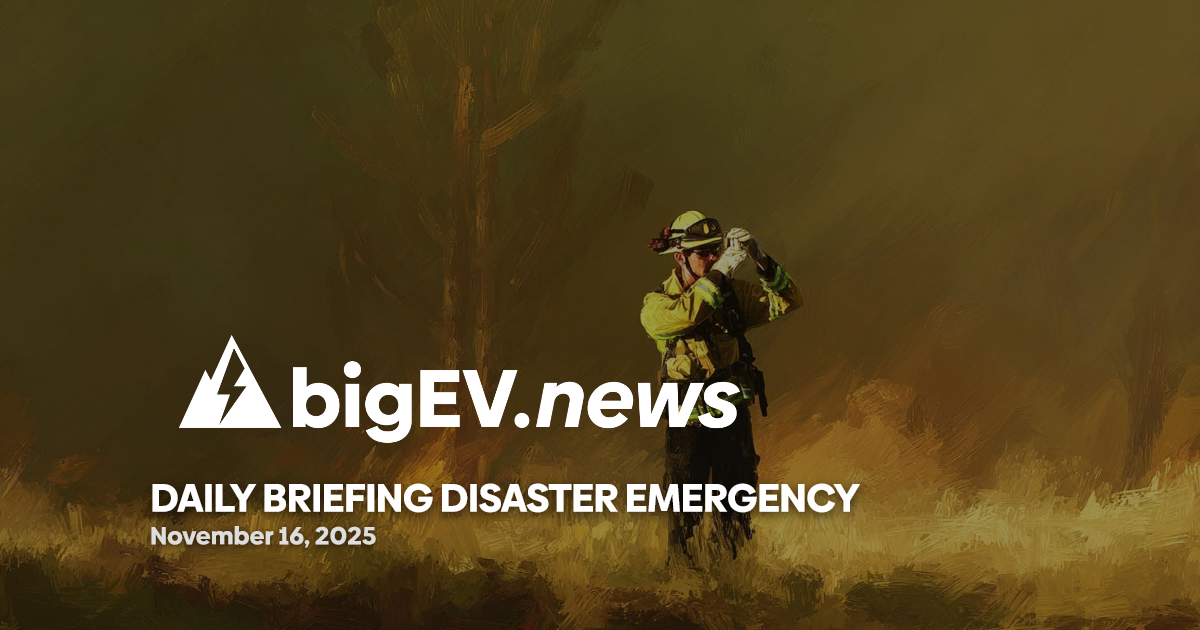From AI-powered decision-making to satellite-driven logistics and community-led flood tracking, today’s breakthroughs are reshaping disaster response and survival worldwide.
At a glance – In the past 24 hours, the disaster technology sector has seen a surge in innovation, with new frameworks for artificial intelligence (AI) in crisis management, expanded use of Earth observation satellites, and the integration of community-driven data platforms. These developments are converging to create a more resilient global infrastructure for disaster prediction, response, and recovery. The focus is not only on rapid technological advancement but also on ethical deployment, interoperability, and the empowerment of local communities. As climate-driven disasters become more frequent and severe, the synergy between advanced analytics, real-time data, and grassroots participation is proving essential for effective emergency management and survival.
Technology advance – Researchers at Cranfield University have unveiled a structured AI decision-making framework specifically designed for disaster response. This system leverages unmanned aerial vehicles (UAVs) and satellite imagery to autonomously assess crisis scenarios and recommend optimal relief operations. The framework demonstrated a 39% higher accuracy than human operators and a 60% improvement in decision stability across multiple disaster scenarios. By embedding ethical guidelines and transparency into the AI’s core, the research addresses the critical need for responsible automation in life-and-death situations. The study’s findings suggest that such structured AI could soon become a cornerstone of rapid, reliable disaster management, reducing human error and accelerating lifesaving interventions.
Partnerships – In a significant leap for community resilience, the University of South Florida (USF) has partnered with local governments and emergency agencies to deploy the CRIS-HAZARD app, a platform that combines AI with crowdsourced data to track flooding in real time. Developed in the aftermath of hurricanes Helene and Milton, the app empowers residents to report water levels and infrastructure damage, which is then integrated with remote sensing data for comprehensive flood mapping. This collaborative approach not only speeds up emergency response but also fosters adaptive strategies for future storms. The partnership exemplifies how academic research, public agencies, and citizen scientists can co-create solutions that are both technologically advanced and deeply rooted in community needs.
Acquisitions/expansions – The satellite sector has witnessed a notable expansion, with several commercial and governmental entities investing in next-generation Earth observation constellations. These satellites now provide high-resolution, real-time imagery that is critical for assessing disaster impacts, restoring communications, and guiding humanitarian logistics. Recent launches have focused on enhancing the ability to map infrastructure damage, monitor environmental changes, and support search and rescue operations. The integration of synthetic aperture radar and multispectral imaging has further improved the detection of survivors and the identification of logistical bottlenecks. This expansion is enabling faster, more precise allocation of resources and the establishment of temporary communication networks in areas where terrestrial infrastructure has failed.
Regulatory/policy – Policymakers and international agencies are responding to the rapid technological evolution by updating frameworks for disaster risk reduction (DRR). A new special report from the United Nations Office for Disaster Risk Reduction (UNDRR) highlights the transformative role of AI, machine learning, and remote sensing in hazard analysis and early warning systems. However, the report cautions that technology alone cannot address all DRR challenges; successful implementation requires integration with socioeconomic, cultural, and infrastructural factors. Regulatory bodies are now emphasizing the need for ethical standards, data privacy, and cross-sector collaboration to ensure that technological advances translate into equitable and effective disaster resilience worldwide.
Finance/business – The business landscape for disaster tech is experiencing robust growth, with increased investment in backup power systems, emergency supply chains, and resilient communications infrastructure. Companies specializing in battery storage, microgrids, and portable energy solutions are reporting record revenues as demand surges from both public and private sectors. Executive commentary from leading firms underscores the importance of scalable, modular systems that can be rapidly deployed in crisis zones. Financial analysts note that the convergence of climate risk and technological innovation is creating new market opportunities, particularly for solutions that bridge the gap between prediction, immediate response, and long-term recovery. This trend is expected to accelerate as governments and insurers prioritize resilience in the face of escalating natural disasters.
Sources: TechXplore, Innovation News Network, UNDRR, University of South Florida, Scientific Reports, industry press releases









